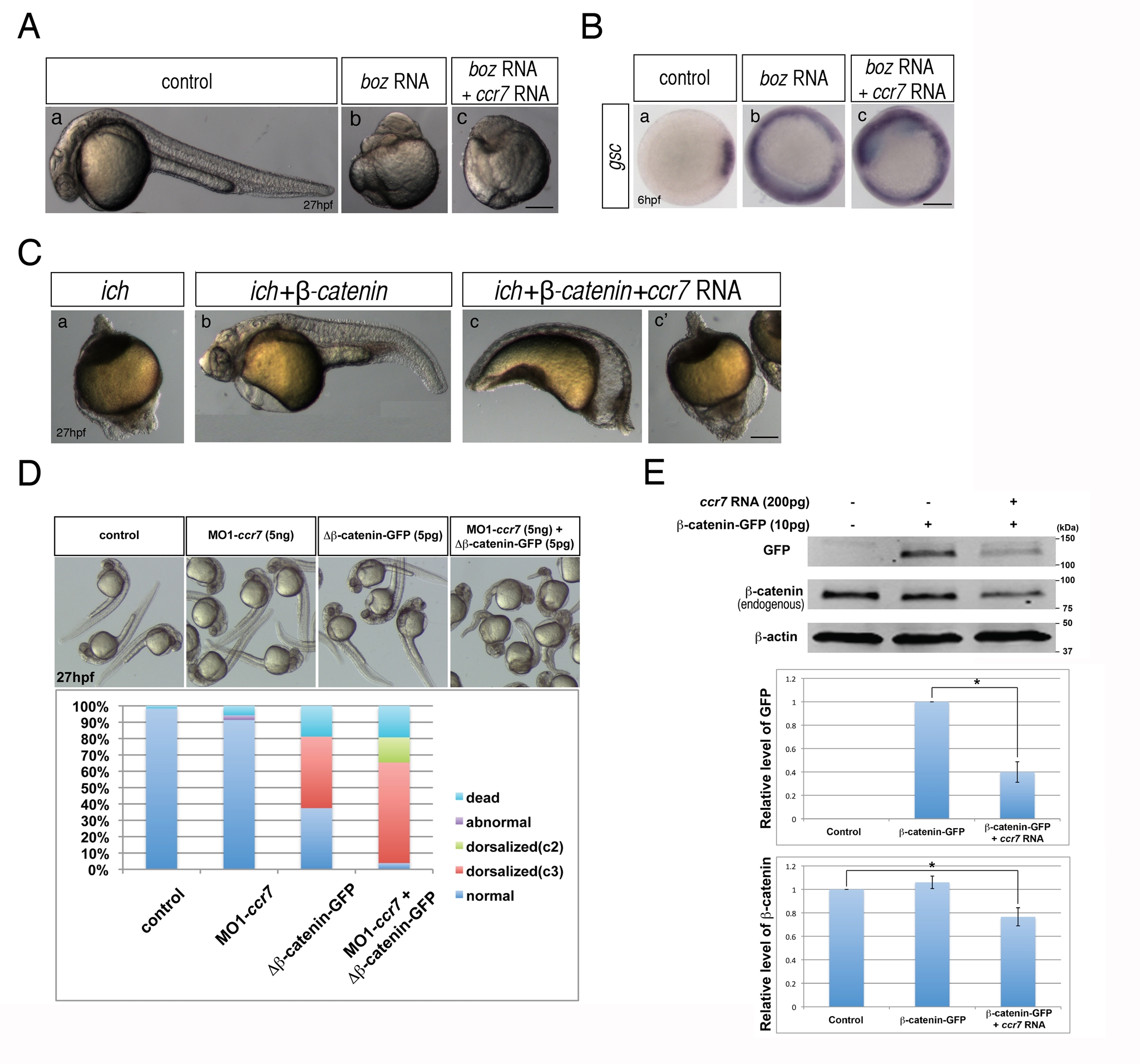Fig. S2
Ccr7 acts upstream of Boz and proximally to β-catenin. (A) The dorsalized phenotypes caused by Boz overexpression (50 pg; n = 15/15) (b) compared to control embryos (a), could not be suppressed by Ccr7 overexpression (150 pg; n = 16/16) (c). Lateral views of embryos at 30 hpf. (B) The expansion of gsc expression induced by injection of boz RNA (b, 50 pg; n = 20/20), compared to control (a), remained unchanged in embryos co-injected with ccr7 RNA (c, 150 pg, n = 18/18). (C) Penetrance of the strongly ventralized ich mutant phenotype (a; 100%, n = 25) was reduced by injection of synthetic RNA encoding β-catenin (b; 50 pg, 6%, n = 15). This rescue was inhibited by co-injection of ccr7 RNA (c, c2, 150 pg, strongly ventralized phenotype 81%, n = 21). Lateral views at 27 hpf. (D) Co-injection of MO1-ccr7 enhanced the penetrance and expressivity of the dorsalized phenotypes of WT 27 hpf embryos injected with RNA encoding ΔN-β-catenin. (E) Ccr7 gain-of-function decreased both levels of endogenous β-catenin and ectopic β-catenin-GFP. Western blotting of β-catenin and GFP protein from uninjected control, β-catenin-GFP RNA (10 pg) injected, or β-catenin-GFP RNA (10 pg)/ccr7 RNA (200 pg) co-injected embryos at 4 hpf. Graphs below show the relative protein level (signal intensity) quantified from three separate immunoblots. * p<0.05.

